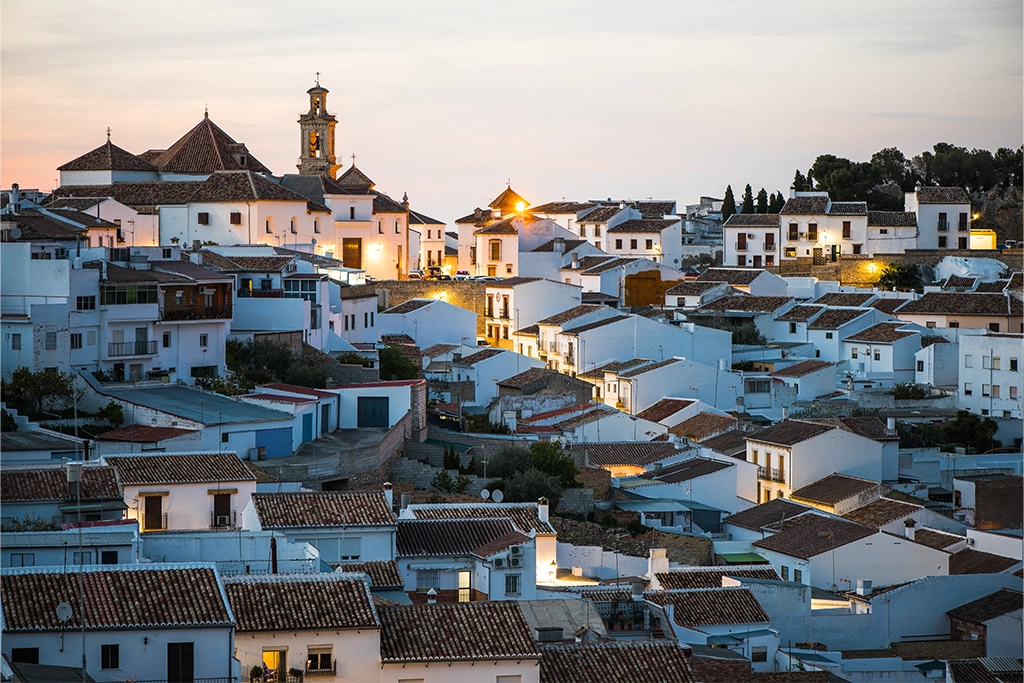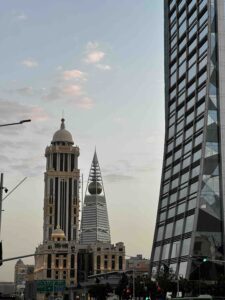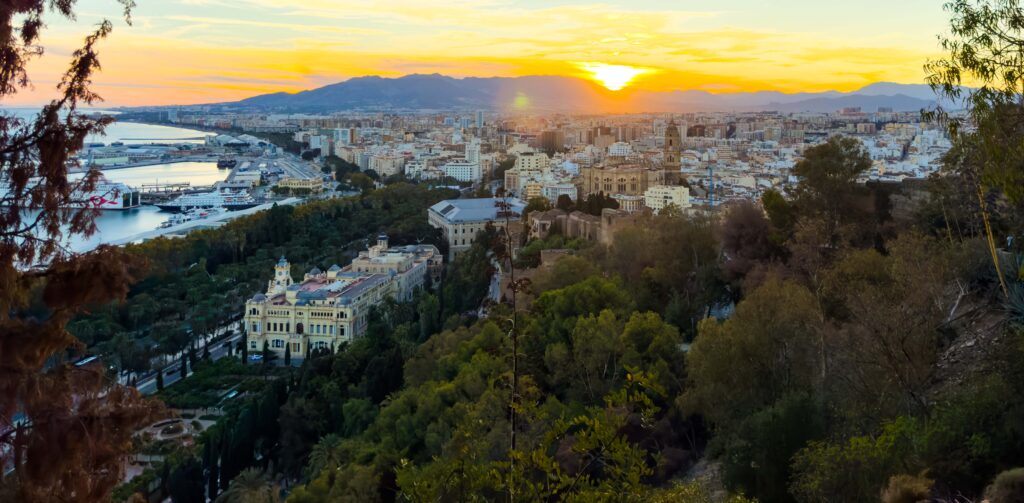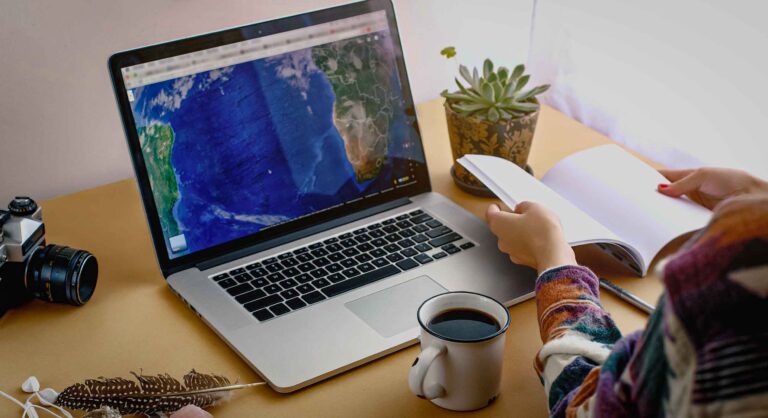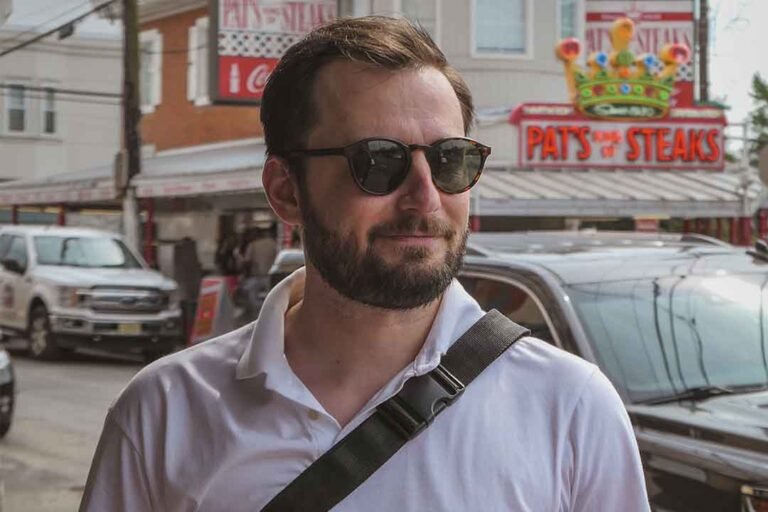As someone who has spent extensive time across the Middle East – from living in Lebanon to working as an archaeologist in Jordan and Northern Iraq – I thought I knew what to expect when visiting Riyadh. But my recent week in Saudi Arabia’s capital completely changed my perception of both the city and country. Here’s my honest guide to what surprised me most about visiting Riyadh in 2025 and what you should know before visiting.
How to Visit Riyadh: Quick Travel Tips
Before diving into my observations, here are the quick hits of what you need to know before visiting:
- Tourist visas are now easily available through an online application
- 96-hour transit visas are available if you’re passing through
- The visa process was simplified in September 2019
- No alcohol is permitted anywhere in the country (except diplomatic quarters)
- English is widely spoken in tourist areas
- Everyone is extremely friendly and accommodating
1. Modern Entertainment in Riyadh: More than Alcohol
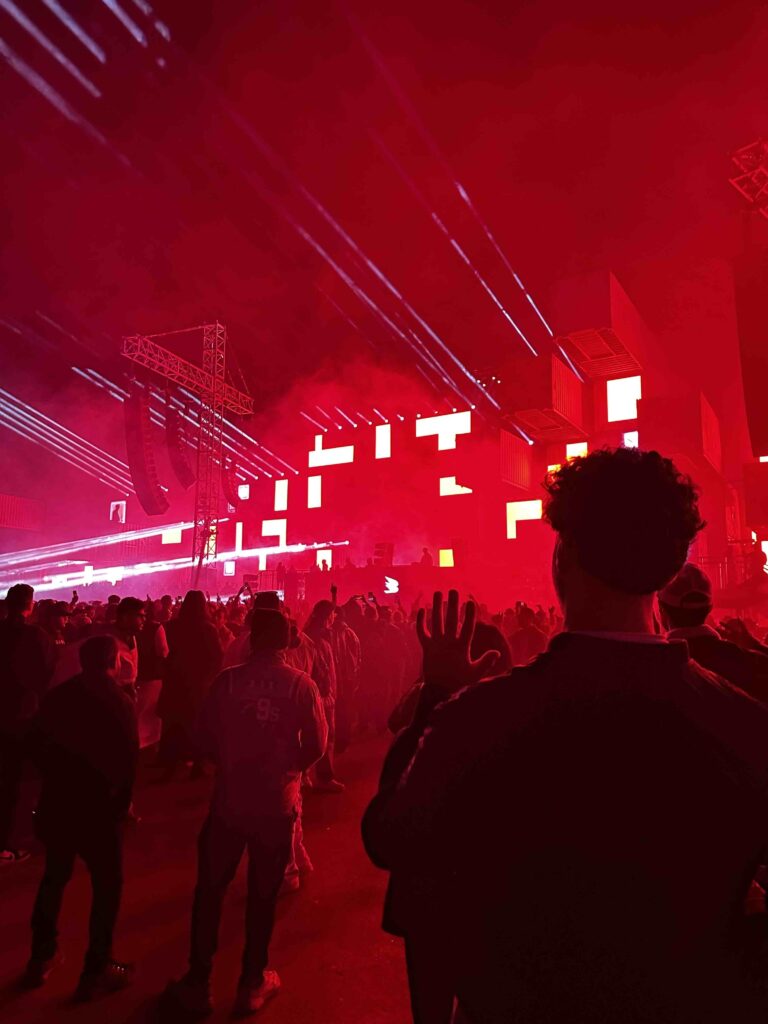

When you think of Saudi Arabia, entertainment options are not what first comes to mind. Whatever your preconceptions about things to do in Saudi Arabia, I can almost guarantee they’re outdated. The Riyadh I experienced in 2025 isn’t just open to entertainment – it’s embracing it on a massive scale.
Boulevard World exemplifies this transformation. Imagine combining the themed immersion of Epcot with the architectural ambition of the Vegas strip. The result is a sprawling entertainment complex where you can “travel the world” through more than 20 different themed zones. Each area features authentic food, cultural performances, and scaled-down versions of famous landmarks. They even have their own version of the Sphere, though not quite as massive as the Las Vegas original.
What truly blew me away was the scale of live entertainment. During my visit, I attended MDLBeast’s Sound Storm festival – an event that drew 450,000 people to an old airfield outside the city. Multiple stages, art installations, and performances from international acts like The Roots and Camila Cabello. The music wasn’t censored, though I noticed performers opted for strategic wardrobe choices that covered more skin than they might elsewhere. If you’re lucky enough to have your trip align with a MDLBeast event, make your way there.
When the festivals aren’t running, Riyadh’s nightlife centers around its incredible coffee culture. I spent a Friday night at what’s claimed to be the world’s largest coffee shop, and the energy rivaled any bar I’ve visited elsewhere. Close your eyes, and you could be in any cosmopolitan city’s hottest nightspot – just swap the cocktails for creative coffee concoctions.
2. The City That Never Sleeps: Riyadh’s 24/7 Culture
Saudi Arabia’s relationship with sleep is fascinating, and the statistics back up what I observed: Saudis average just 6.5 hours of sleep per night, tied with South Korea for the least in the world. To put that in perspective, New Zealanders get a full hour more rest each night.
This sleepless culture manifested in surprising ways during my visit. The conference I attended ran from noon until midnight – and no, that’s not a typo. Even on a Tuesday night at 11 PM, Boulevard World was packed with families enjoying the attractions. Coffee shops buzzed with energy well into the night, with locals seemingly immune to the caffeine that would keep most visitors up until dawn.
The city’s nocturnal nature isn’t just about leisure – it’s practical too. With summer temperatures soaring above 45°C (113°F), much of the construction work happens at night. While I can’t speak to the working conditions, the sight of full construction crews working under floodlights at midnight was yet another reminder that in Riyadh, the city never truly sleeps.
3. Rapid Growth and Development: A City in Constant Motion
The scale of Riyadh’s growth is staggering. As of 2024, 7.8 million people call this metropolis home – rivaling New York City in population. But what makes this number truly remarkable is how quickly it’s grown. In just the past decade, the city has expanded by 30%, adding nearly 2 million new residents.
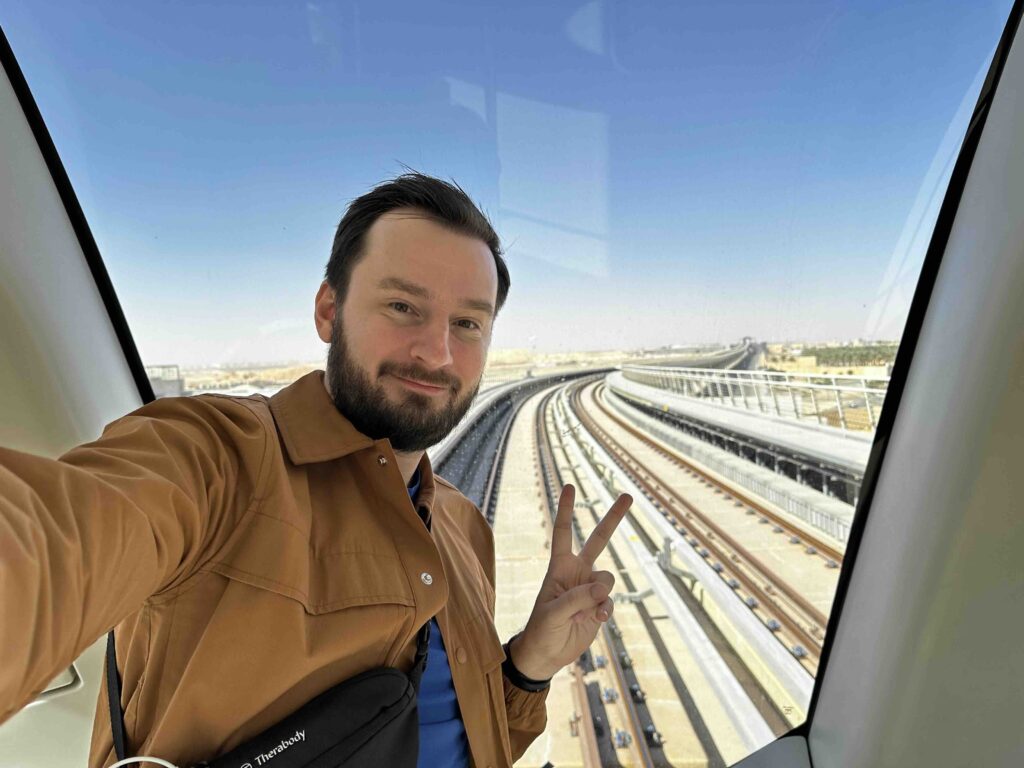

This explosive growth creates a fascinating contrast. From my hotel window, I could see massive construction projects reaching toward the sky, while on the ground, the infrastructure struggled to keep pace. Google Maps became more of a suggestion than a guide, consistently underestimating travel times through the city’s notorious traffic.
The new metro system perfectly illustrates both the ambition and growing pains. Construction began in 2014, originally planned to open in 2019. While that timeline wasn’t met, the fact that they built and opened six lines between December 2024 and January 2025 is remarkable. Coming from Philadelphia, where a single line can take a decade to complete, the speed is almost unbelievable. Yet even two weeks after opening, the Blue Line through the business district was already crowded – a sign that even rapid development struggles to keep pace with demand.
4. Architecture and Urban Planning: Phoenix in the Arabian Peninsula
Having spent time in Phoenix, Arizona, the parallels with Riyadh are striking. Both cities grew from modest desert settlements into sprawling metropolises, expanding outward from small water sources. While Riyadh lacks Phoenix’s endless suburban subdivisions, the infrastructure and development patterns share surprising similarities.
Walking through Riyadh’s streets, you’ll find architecture that could belong in any modern American city, sitting alongside traditional Arabian designs. I discovered trendy coffee shops and bakeries that wouldn’t look out of place in Brooklyn or Portland, yet they exist harmoniously with traditional markets and mosques. It’s this blend of familiar and foreign that makes Riyadh uniquely captivating – a modern city that hasn’t forgotten its desert roots.
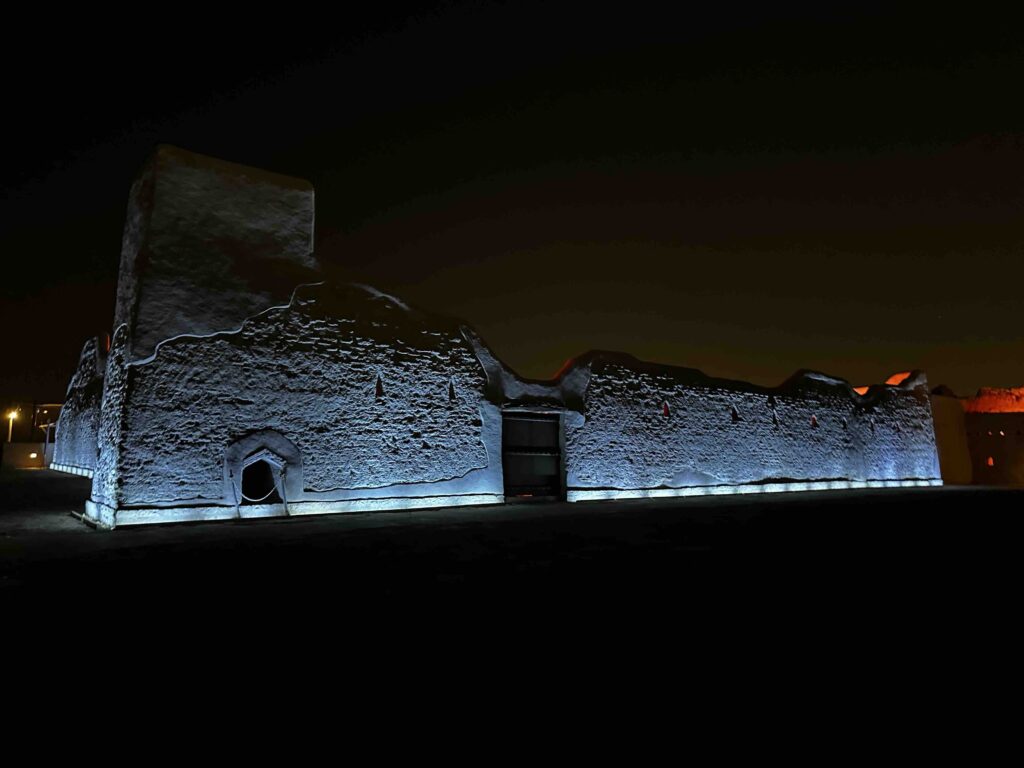

5. Where Past Meets Future: At-Turaif and Diriyah
As an archaeologist, I always seek out historical sites in my travels, and At-Turaif in Diriyah proved to be one of the most fascinating I’ve ever visited. This UNESCO World Heritage site is more than just ancient ruins – it’s the birthplace of the House of Saud, making it central to Saudi Arabia’s national identity.
What makes At-Turaif unique is its active role in modern politics and identity. Few archaeological sites serve as both historical monuments and symbols of current political legitimacy. The closest parallel I can think of is Independence Hall in Philadelphia, but even that comparison falls short.
The site’s development through the Diriyah Gate project reveals how Saudi Arabia approaches its heritage. While I found the presentation somewhat sanitized, almost theme-park-like, it’s fascinating to see how archaeology becomes a tool for nation-building.
The National Museum surprised me even more. Instead of downplaying pre-Islamic history, as I might have expected, the museum proudly showcases the peninsula’s ancient cultures. This openness to discussing pre-Islamic periods reveals a more nuanced approach to history than many outsiders might expect.
6. Saudi Arabia Is More Than Dubai 2.0
Here’s a statistic that was often told to me that I couldn’t stop thinking about: 63% of Saudis are under 30 years old. This youth-driven demographic creates an energy entirely different from other Gulf cities. While Dubai has grown to 3.6 million people, less than 10% are Emirati nationals. In contrast, Saudi nationals make up about 60% of Saudi Arabia’s 32.2 million population.
This difference became apparent at events like the MDLBeast festival, where Saudi and Arab artists drew larger crowds than Western performers. At my conference, talks by Saudi speakers consistently outpacked those by international presenters. Even in casual conversations, like when a Saudi friend proudly shared local music during a car ride, I sensed a deep pride in developing a uniquely Saudi cultural identity rather than simply importing Western influences.
7. Vision 2030: Not Just a Slogan
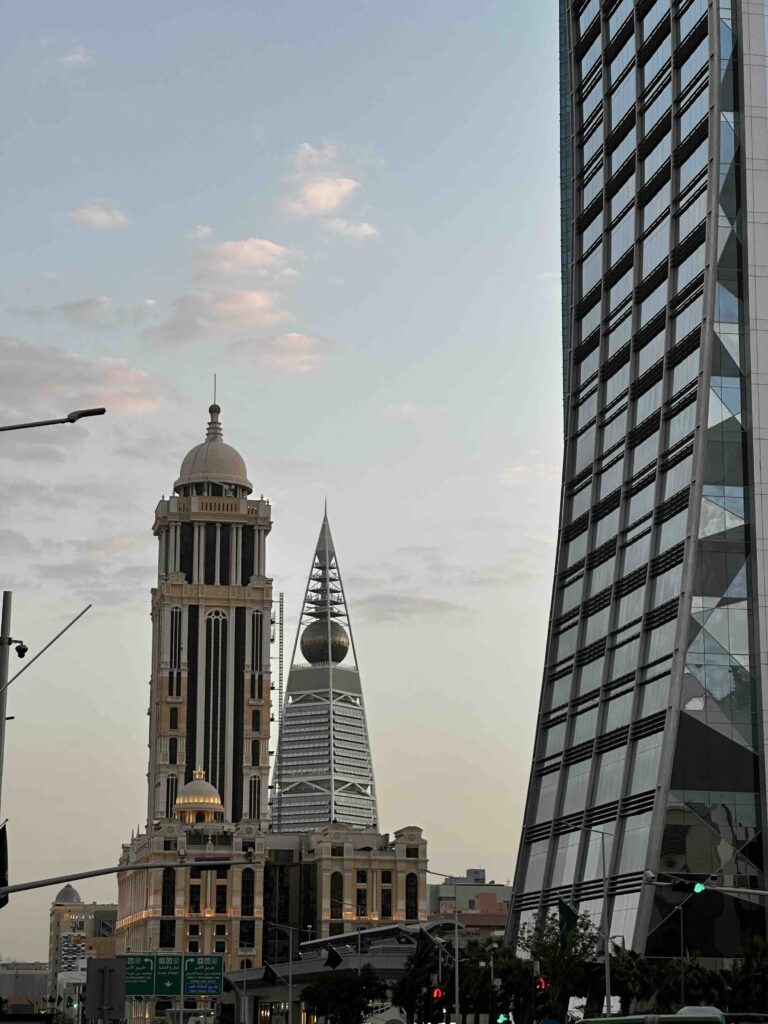

Vision 2030 could easily be dismissed as just another government initiative, but my time in Riyadh showed me it’s far more. Launched in 2016, this plan for economic diversification, tourism growth, and social development has become deeply embedded in the national consciousness.
What struck me wasn’t just the physical manifestations of this vision – the new metro, the entertainment districts, the construction – but how naturally it came up in everyday conversations. Young Saudis, many of whom have lived most of their adult lives under this framework, speak about these goals not as government propaganda but as a shared vision for their future.
The energy is palpable. It feels like being in a city on the launch pad, ready to blast off into its next phase of development. While it’s easy to be skeptical of government-led transformation programs, the genuine excitement I encountered among ordinary Saudis about their country’s future was impossible to ignore.
Essential Travel Tips for Visiting Riyadh
Must-Visit Attractions
- Boulevard World
- At-Turaif Historical District
- National Museum
- Kingdom Centre Tower & Mall
- KAFD (King Abdullah Financial District) – District and Metro Station
Transportation
- While the new metro is efficient, download ride-hailing apps like Uber. Local Saudi citizens drive for Uber while immigrants drive the taxis. Both are safe and reliable.
- Taxis are readily available but ensure they use the meter.
- Traffic is extremely bad, so make sure you leave plenty of time to get around.
Cultural Considerations
- Dress modestly — but don’t worry too much. Use common sense about what you wear (no bare midriff’s) but you won’t get judged for typical western wear.
- Prayer times can affect business hours.
- Alcohol is banned throughout the kingdom.
Money and Payment
- Credit cards are widely accepted (I never even saw cash).
- Having some cash is useful for taxis and small purchases – you will need it when out in the countryside.
- ATMs are readily available and safe.
Weather and Timing
- Winter (November-February) is ideal for outdoor activities
- Summer requires careful planning around the heat
- Indoor attractions are plentiful year-round
- Check event calendars as timing can affect your experience
Language
- English is widely spoken in many parts of Riyadh.
- Learning basic Arabic greetings is appreciated.
- Most signs are bilingual.
- Download a translation app as backup.
Final Thoughts
Riyadh in 2025 is a city in rapid transition, balancing tradition with ambitious modernization. While it’s important to be aware of and respect local customs and regulations, the city offers a unique travel experience that defies many Western preconceptions. Whether you’re interested in history, modern architecture, entertainment, or cultural experiences, Riyadh has something to offer.
Looking to explore more of the Middle East? Stay tuned for upcoming group trips to Saudi Arabia, other parts of the Middle East, and more.

